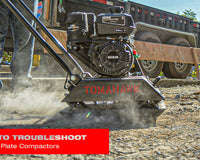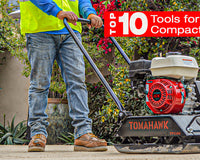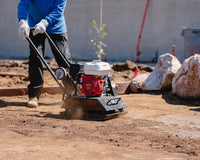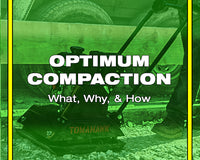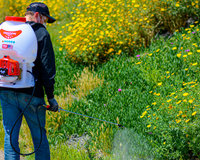Choosing the right gravel for a driveway is about more than just appearance. Driveway gravel must withstand weather, support vehicle traffic, and maintain its shape over time. While homeowners often focus on aesthetics, factors like compaction ability, drainage, and climate suitability are equally important. Whether you're starting a new build or resurfacing an existing drive, understanding your gravel options—and how to prepare the sub-base properly—will result in a more functional, long-lasting surface.
Crushed Stone: The Most Common and Reliable
Crushed stone, often referred to as "road mix" or "crusher run," is one of the most widely used materials for driveways. It’s typically a blend of stone dust and angular gravel, which allows for tight compaction and excellent load-bearing strength. This mix creates a firm surface that resists shifting and rutting even under frequent use. Crushed stone is especially effective in wet or variable climates due to its excellent drainage properties.
To maximize performance, crushed stone must be compacted in multiple layers. Tools like the Tomahawk Plate Compactor are ideal for compressing each lift of material evenly, preventing future settling or pothole development.
Pea Gravel: Smooth and Decorative, But Less Stable
Pea gravel is known for its attractive, rounded appearance and is often used in decorative landscaping projects. While some homeowners choose it for driveways because of its polished look, it poses challenges when used for high-traffic areas. The small, smooth stones tend to shift easily, especially on slopes, and require frequent raking or containment edging to maintain uniform coverage.
Pea gravel also lacks the angular edges that help with mechanical interlock and compaction, making it less durable under heavy vehicle loads. For that reason, it’s more appropriate for short driveways with low traffic or as a top layer over a more stable crushed base.
Marble Chips: Aesthetic Appeal with High Maintenance
Marble chips offer a bright, striking finish and are often chosen for upscale or designer driveways. However, they come with several trade-offs. They are among the most expensive gravel types, and their bright color can fade or discolor over time due to exposure to UV light and rainwater acidity. Additionally, marble chips can be slippery and don’t compact well, which means they are more vulnerable to displacement under tire pressure.
If used, it’s critical to install them over a firm sub-base of compacted aggregate. Without adequate preparation, even expensive decorative gravel can lead to a short-lived or unsatisfactory result.
Recycled Asphalt or Concrete: Budget-Friendly and Durable
For those prioritizing affordability and sustainability, recycled asphalt or crushed concrete offers an effective alternative. These materials provide a compactable surface with good drainage and tend to lock together over time, especially in warm conditions. While less visually refined than natural stone, they perform exceptionally well in rural or utilitarian applications.
Compaction is particularly important for recycled materials, as inconsistent particle sizes can create air pockets. Using vibratory compactors ensures even density and prevents shifting. This is another application where equipment like the Tomahawk vibratory plate compactor adds significant value to the installation process.
Final Considerations: Base Prep Is Just as Important
While choosing the right gravel is crucial, it’s only part of the equation. The success of any gravel driveway depends just as much on preparation: a properly graded surface, well-compacted sub-base, and sufficient thickness. According to DrivewayTips.com, “The most common cause of gravel driveway failure is poor preparation and compaction—not the gravel itself.”
For optimal results, start with a compacted sub-layer of larger crushed stone, followed by finer gravel on top. Each layer should be moistened and compacted before the next is applied. This method prevents erosion, rutting, and uneven wear, especially in areas with heavy rainfall or snowmelt.
With the right material and installation process—supported by the appropriate compaction equipment—your gravel driveway can be both functional and attractive for years to come.

